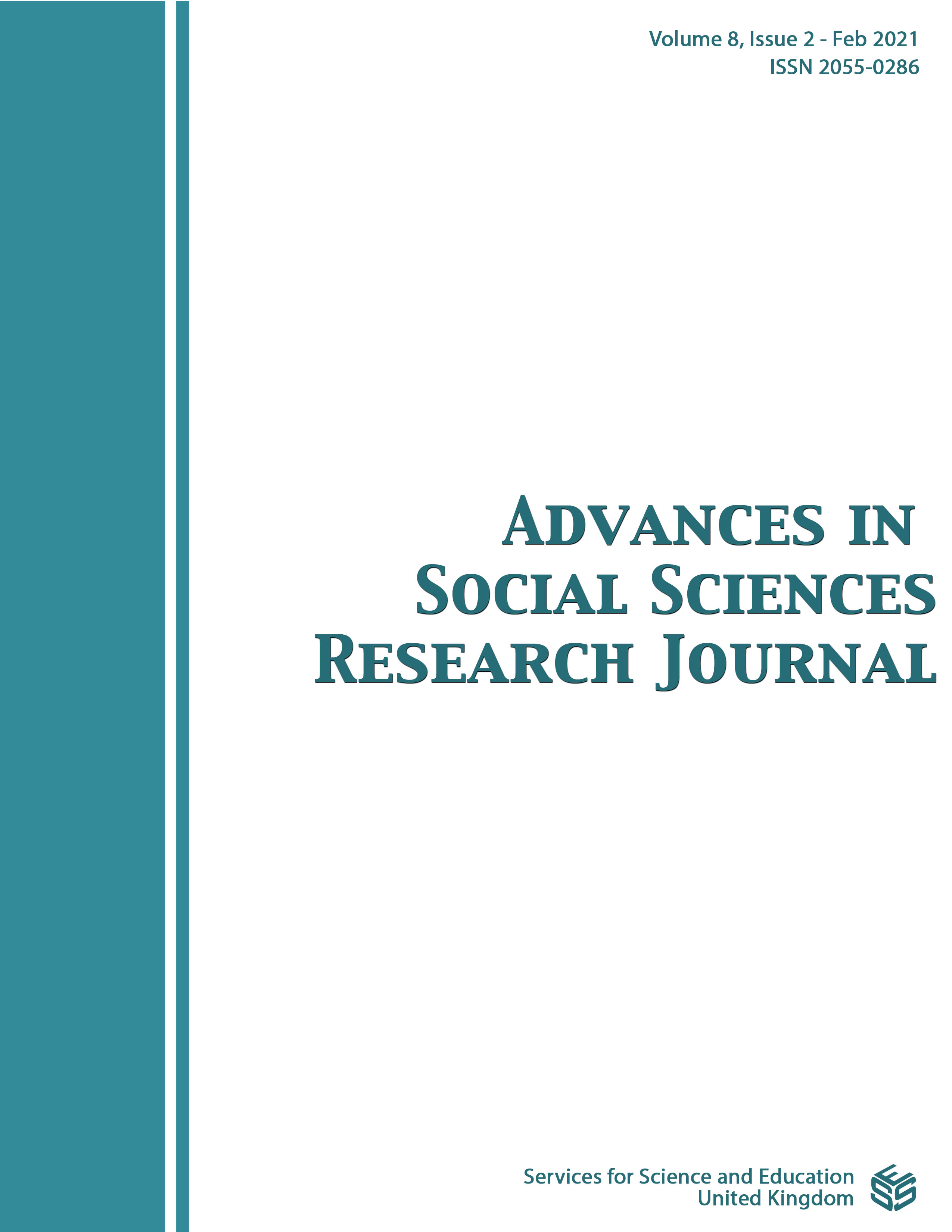Subtitle
DOI:
https://doi.org/10.14738/assrj.82.9773Keywords:
teacher age, anatomy education online, Covid-19 pandemic, theoretical and practical sessions, active learning, assessment.Abstract
In order to investigate the correlation between teachers’ age and anatomy education online in China during the Covid-19 pandemic, we conducted a nationwide survey among the anatomists in three age cohorts (i.e., 30-39, 40-49, 50-59 years old) at the medical schools in mainland China, Hong Kong and Macau. Of the 359 respondents, there were 31% (n=108) anatomists aged 30-39, 46% (n=160) anatomists aged 40-49, and 23% (n=80) anatomists aged 50-59 years old, who were teaching clinical medicine students online at medical schools in China during the pandemic. The survey questionnaire contains the following items on online anatomy courses during the pandemic: theoretical sessions, practical sessions, active learning, assessment and perception. Based on the Chi-Square statistical analysis, although this study demonstrated that some noticeable differences existed in several items, we found the statistically significant difference was on “the formats of recording the theoretical sessions for asynchronous recorded broadcasting of online course”, among the three age groups, more teachers aged 30-39 chose to capture the PowerPoint presentation screen without the teacher appearing in the recorded video. Overall, this survey revealed that the teachers’ age and their teaching experience offline would not be the decisive factors in implementing anatomy online course effectively during the pandemic.
References
2. Saglietto, A., et al., COVID-19 in Europe: the Italian lesson. Lancet, 2020. 395(10230): p. 1110-1111.
3. Zhu, N., et al., A novel coronavirus from patients with pneumonia in China, 2019. New England Journal of Medicine, 2020.
4. Chen, S., et al., COVID-19 control in China during mass population movements at New Year. The Lancet, 2020. 395(10226): p. 764-766.
5. Chinazzi, M., et al., The effect of travel restrictions on the spread of the 2019 novel coronavirus (COVID-19) outbreak. Science, 2020. 368(6489): p. 395-400.
6. Lin, Q., et al., A conceptual model for the outbreak of Coronavirus disease 2019 (COVID-19) in Wuhan, China with individual reaction and governmental action. International journal of infectious diseases, 2020.
7. Sohrabi, C., et al., World Health Organization declares global emergency: A review of the 2019 novel coronavirus (COVID-19). International Journal of Surgery, 2020.
8. Shaw, S.C., Hopelessness, helplessness and resilience: The importance of safeguarding our trainees' mental wellbeing during the COVID-19 pandemic. Nurse Education in Practice, 2020. 44: p. 102780.
9. Longhurst, G.J., et al., Strength, Weakness, Opportunity, Threat (SWOT) Analysis of the Adaptations to Anatomical Education in the United Kingdom and Republic of Ireland in Response to the COIVD‐19 Pandemic. Anatomical Sciences Education, 2020.
10. Stokes, D.C., Senior Medical Students in the COVID‐19 Response: An Opportunity to Be Proactive. Academic Emergency Medicine, 2020. 27(4): p. 343-345.
11. Viner, R.M., et al., School closure and management practices during coronavirus outbreaks including COVID-19: a rapid systematic review. The Lancet Child & Adolescent Health, 2020.
12. Ebrahim, S.H., et al., Covid-19 and community mitigation strategies in a pandemic, 2020, British Medical Journal Publishing Group.
13. Alvarez, I., T. Guasch, and A. Espasa, University teacher roles and competencies in online learning environments: a theoretical analysis of teaching and learning practices. European Journal of Teacher Education, 2009. 32(3): p. 321-336.
14. Ní Shé, C., et al., Teaching online is different: Critical perspectives from the literature. 2019.
15. Chickering, A.W. and S.C. Ehrmann, Implementing the seven principles: Technology as lever. AAHE bulletin, 1996. 49: p. 3-6.
16. Gorsky, P. and I. Blau, Online teaching effectiveness: A tale of two instructors. The International Review of Research in Open and Distributed Learning, 2009. 10(3).
17. Gan, C. and W. Wang, Uses and gratifications of social media: a comparison of microblog and WeChat. Journal of Systems and Information Technology, 2015.
18. Wang, Z. and Q. Yu, Privacy trust crisis of personal data in China in the era of Big Data: The survey and countermeasures. Computer Law & Security Review, 2015. 31(6): p. 782-792.
19. Munoz Carril, P.C., M. Gonzalez Sanmamed, and N. Hernandez Selles, Pedagogical roles and competencies of university teachers practicing in the e-learning environment. International Review of Research in Open and Distributed Learning, 2013. 14(3): p. 462-487.
20. Moore, M.G., Distance education theory, 1991, Taylor & Francis.
21. Walters, S., et al., Faculty perceptions related to teaching online: A starting point for designing faculty development initiatives. Turkish Online Journal of Distance Education, 2017. 18(4): p. 4-19.
22. Bezuidenhout, A., Analysing the importance-competence gap of distance educators with the increased utilisation of online learning strategies in a developing world context. International Review of Research in Open and Distributed Learning, 2018. 19(3).
23. Abdous, M.h., A process-oriented framework for acquiring online teaching competencies. Journal of Computing in Higher Education, 2011. 23(1): p. 60-77.
24. Berge, Z.L., Changing instructor’s roles in virtual worlds. Quarterly Review of Distance Education, 2008. 9(4): p. 407-414.
25. Chang, C., H.-Y. Shen, and E.Z.-F. Liu, University faculty’s perspectives on the roles of e-instructors and their online instruction practice. International Review of Research in Open and Distributed Learning, 2014. 15(3): p. 72-92.
26. Goold, A., J. Coldwell, and A. Craig, An examination of the role of the e-tutor. Australasian journal of educational technology, 2010. 26(5).
Downloads
Published
How to Cite
Issue
Section
License
Authors wishing to include figures, tables, or text passages that have already been published elsewhere are required to obtain permission from the copyright owner(s) for both the print and online format and to include evidence that such permission has been granted when submitting their papers. Any material received without such evidence will be assumed to originate from the authors.






